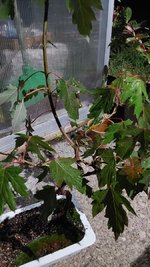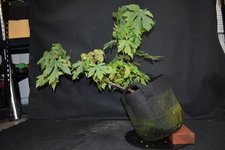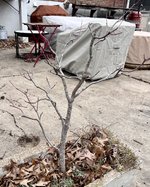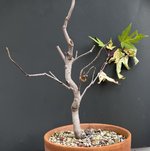Thanks!
Some awfully good points there
@MaciekA.
Bonsai flow comes in many ways for me,
- interpreting growth patterns over time
- enjoying working with a tree to grow it towards a goal, vs forcing it. (Kind of like
@BobbyLane ’s “listen to the tree idea”)
- testing a new (to me) technique and having success
- understanding the trade offs in development and being able to consciously make an informed decision.
- experimenting with just about anything there is time for….
- the state of mental flow that can come with working on a project… etc
In my first couple years I specifically started the Autumn Blaze maple forest, a Crabapple forest, and number of small trees to force myself to challenge some assumptions that were widely posted at the time. It has taken years for me to appreciate the flow of each. Similar in a ways to your Cottonwood.
It took a number of years to hone this perspective, so I felt kinda wonky posting these concepts on line to one and all.
On the other hand I learned an awful lot from other folks here like
@Leo in N E Illinois @Brian Van Fleet, and also Aarin Packard at PMB, just to name a couple of the many folks who have helped me put this perspective into words.
So I felt a post might help others jumpstart their learning…. as my perspective of BonsaiNut as more of a collective educational bonsai platform vice a pure social one.
Not sure why.
Trees aren’t static, they can’t be stopped from growing….given the overarching goal is to keep the tree robust and healthy within one’s other goals.…trees are continually morphing while growing.
One will always have to redevelop one’s techniques and knowledge to match the tree’s level of refinement to keep it robust and healthy while accomplishing one’s aesthetic goals.
The trees evolve and the hobbyist has to evolve their knowledge, design skills and abilities over time to match this evolution.
There are trees in a high level of refinement at PMB, but each year they continue to have robust and healthy growth.… and each year the staff and we volunteers have to work hard to achieve the desired level of aesthetic design…which constantly evolves over time until the tree’s outgrow a particular aesthetic. Then it’s time for a major redesign… slowly evolving towards a more ancient aesthetic.
So no diminishing returns. A design can only be held static for a little while until the tree grows out of it, creating new demands of the practitioner
Hope that answers the question.
cheers
DSD sends










